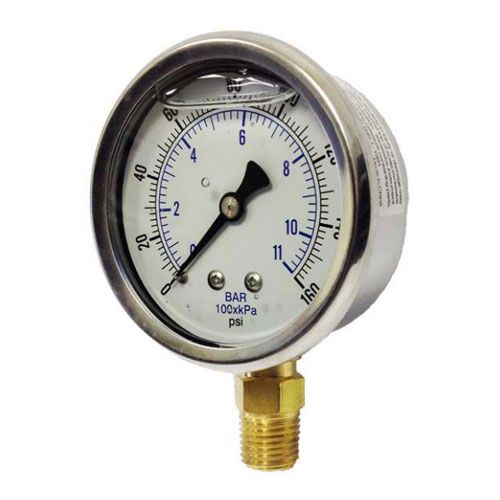A pressure gauge out of calibration can be extremely frustrating for any industry. For microbrewing, a gauge out of calibration can literally offset the entire regulator system which controls the CO2 levels for the brew. Depending on the severity of the offset, the gauge could be pointing off of zero when there’s no pressure in the line or the gauge could potentially read 1-5% above or below the range it should really be reading. This can become quite an issue for beer brewers because the consistency of the beer depends on an accurate PSI reading. Without a precise reading, the beer could be foamy or flat and let’s be honest, nobody wants that.
To avoid dealing with an inaccurate pressure reading on the line, we suggest getting your gauges NIST certified yearly to keep up with calibration standards. If you don’t want to go through process of sending out your gauges for this certification, we suggest calibrating them yourself in house with an already NIST certified digital gauge. Both of these processes will leave you with a certified, accurate, well working pressure gauge that keeps your CO2 regulators reading accurately.
For those of you who don’t know what a NIST traceable certificate of calibration is, let’s take a moment to fill you in. A NIST certificate is a document stating the pressure instrument falls within the accuracy stated by the manufacturer. It is approved by The National Institute of Standards and Technology (NIST) because the pressure instrument is tested against another, more accurate, NIST traceable pressure instrument. The NIST certificate is essentially a way to get 100% certainty by NIST standards that the pressure instruments you’re using falls within specification.
Now let’s take a deeper dive into the two ways we suggest getting your pressure gauge certified:
Sending Out Your Pressure Gauges for NIST Certification:
One way to be sure the pressure gauges on your CO2 regulators are accurate is to send out your current gauges for calibration. Big Bear Instruments performs NIST Certificates of Calibration daily for many of our customers and we offer expedited 1 day turnaround if you're in a hurry. We test your pressure instrument against our NIST traceable digital gauge at 5 points (or more if requested) spanning the entire scale of the pressure instrument in question. So, for instance, on a 0-1000 psi digital gauge, the gauge would be tested at 200psi, 400psi, 600psi, 800psi, and 1000psi. The reading of the pressure instrument must fall within the accuracy range stated by its manufacturer when tested against our NIST traceable pressure gauge.
Calibrating Your Pressure Gauges In House:
If you are looking for a more inexpensive way to calibrate your pressure gauges, you can purchase an already calibrated digital pressure gauge and perform the calibration process in house using a DIY process specialized for brewers. Depending on your desired accuracy, Big Bear offers the MG-9V, MGA-9V, and MG1-9V series digital pressure gauges manufactured by SSI Technologies. All three models are battery operated and can be NIST Certified by us prior to being shipped to you. If you are not sure which model is right for you, feel free to contact us. We would be happy to walk you through the benefits of each model and help you select the best gauge for your brewery.
If you have any questions regarding calibration or want to know what kind of beer is our favorite, contact us! We’d love to hear from you.

 On high vibration industrial applications, reading a pressure gauge can often be frustrating or in some cases down right impossible without the proper configuration on the gauge. Very often, the end user may experience:
On high vibration industrial applications, reading a pressure gauge can often be frustrating or in some cases down right impossible without the proper configuration on the gauge. Very often, the end user may experience:
 PROCESS CONTROL & MEASUREMENT SOLUTION EXPERTS
PROCESS CONTROL & MEASUREMENT SOLUTION EXPERTS